
Research Article
Austin J Vet Sci & Anim Husb. 2025; 12(2): 1167.
A Comprehensive Review of Animal Health Interventions in the Mixed Crop-Livestock Systems of the East Gojjam Zone, Amhara Region, Ethiopia
Simeneh Yibeltal Alameneh*
East Gojjam Zone Livestock and Fishery Sector Development Office, Animal Health Team, Amhara National Regional State, Debre Markos, Amhara, Ethiopia
*Corresponding author: Simeneh Yibeltal Alameneh, East Gojjam Zone Livestock and Fishery Sector Development Office, Animal Health Team, Amhara National Regional State, Debre Markos, Amhara, Ethiopia Tel: 0915717707/0707331274; Email: yibeltalsimeneh@gmail.com
Received: March 15, 2025 Accepted: April 03, 2025 Published: April 07, 2025
Abstract
Ethiopia has the largest livestock population in Africa, which is contributing to the economy andforeign exchange by exporting animals, hides and skins. Animal Health and Veterinary Services in East Gojam Zone District most of the livestock is mixed with crops. In this study, animal health interventions were mainly identified from 2020 to 2024 in districts located in the zone through secondary data collection. Although bacterial, viral and parasitic diseases can be controlled strategically, the main animal health interventions in the zone include vaccination, deworming, revolving veterinary drug fund and community capacity building. One of the strategies is vaccination and it is an important step to prevent and control various diseases. The performance of various vaccines has been growing year by year and in most districts, they allocate of money more than one million birr to the rotating veterinary revolving fund budget, which prevented diseases from causing huge economic losses to animals due to the problem of drug supply. Deworming has been carried out in all districts through campaigns and interventions based on the local agroecology. In order for these interventions to be successful and sustainable, the leadership and experts at all levels must identify the problems faced each time and monitor the results on animal health, economic benefits and infectious diseasesand take action.
Keywords: Deworming strategies; East Gojjam zone; Economic loss; Ethiopia; Livestock diseases; Mixed crop-livestock system; Vaccination approaches; Veterinary drug
Introduction
Ethiopia is believed to be the first in Africa in the number of animals. It contributes significantly to the country's economy and the livelihood of its people [4]. The sector serves as a key source of foreign exchange for the supply of meat, milk and leather for export [7]. Animal husbandry is an integral part of Ethiopia's mixed croplivestock system. East Gojam zone is big place in Amhara region.The zone has 57% of the region cattle, 23% of sheep, 13% of goats and a share of horses, mules and donkeys. These species are well adapted to the local agro-ecology [13].
Animal husbandry is an important source of animal protein, for crop cultivation, transportation, export goods, agriculture, household energy and as protection during crop failure. In the year It accounts for40% of agricultural GDP, nearly 20% of domestic and 20% of foreign exchange earnings in 2017 [16].
Animal health services are critical to the diagnosis and control of food borne diseases, ensuring food safety and protecting animal health. A strong veterinary system prevents or reduces risks in primary production and promotes responsible use of animal products to reduce drug residues in animal feed [12].
Animal health services include regional diagnostic laboratories, district clinics and rural health posts. Private Clinics: NGOs and Community Animal Health Workers (CAHWs) support these services. Rural clinics are staffed by one or two veterinarians who provide treatment, vaccinations, spaying and assistance. Treatments usually include simple injections, drenches and wound dressings [9].
Challenges in Animal Health Services Animal diseases are widespread in agro-ecological zones, causing economic and social losses [3]. Many communities depend on livestock for their livelihoods but veterinary services remain inaccessible in highlands, lowlands and midlands. Major challenges include: lack of access to veterinary care, especially in remote areas, limited private and public veterinary services, drug resistance, inadequate quality control, poor disease reporting and uncoordinated research efforts. Proposed Solutions to improve veterinary services, Ethiopia should do the following:
Privatize veterinary services to increase efficiency: encourage community-based animal health programs to enhance disease prevention; introduce mobile veterinary clinics to reach rural areas; strengthen disease reporting and research to improve policies; promote regional collaboration for better veterinary services [3].
Prevention and control of animal diseases strengthening animal health systems can improve animal productivity, food security and trade to protect public health. Prevention of animal diseases requires the implementation of effective vaccination programs, improved veterinary services and capacity building measures [10].
The results of this evaluation inform the necessary interventions of government bodies and stakeholders to overcome the problems in the provision of animal health services in various districts of the East Gojjam zone, especially in controlling and preventing animal diseases.
General objectives
In order to increase animal production and productivity and to prevent public health from animal diseases, the research on veterinary medicine delivery is focused on identifying the activities and interventions in animal health care in East Gojam zone in Amhara region.
Specific objectives
1. To evaluate the types of vaccines given every year to control major animal diseases.
2. To analyze trends in vaccination coverage in the last five years.
3. To identify the months in which vaccination is given to different animals in the East Gojam zone and to evaluate the months in which vaccination is given in abundance.
4. To assess the cost recovery of the revolving fund of veterinary drug in each district
Approaches and Methodologies
Approach
Participatory research methods are presented based on the research framework of the mixed crop farming system involving the farmers' community and other stakeholders. The basic principle of this system is based on the participation of farmers in the evaluation and planning of their needs using a multidisciplinary approach and it correctly acknowledges the involvement of different stakeholders in the progression of animal health services development [2,8].
Accordingly, in the East Gojjam zone, this settlement in order to conduct system analysis, interdisciplinary research and research were conducted with veterinary service delivery system experts.
Survey Design and Data Collection
The study employed a mix of qualitative survey techniques and tools to generate data from primary and secondary sources that served its purpose. Prior to the implementation of field research, an extensive desk review was conducted to identify critical data gaps that served as input for designing survey instruments for primary data collection.
As well as the evaluation of secondary data to confirm the results of the qualitative research report. It should be noted that writing was an important part of the process. The research work is carried out by published and unpublished documents of the Ethiopian Agricultural Research Institute, the Central Statistics Authority (CSA) and the Ministry of Agriculture, other governmental and non-governmental organizations. A review of some major secondary data includes scientific papers; Amhara Agricultural Research Institute, Unpublished documents of East Gojjam Zone Livestock Breeding Office and Related Investigative Breeding System Research Reports. After the first extensive table evaluation work, the research team in animal health developed important semi-structured survey instruments covering service and supply issues affecting the livestock sector.
A field survey (SMS) spanning over five years was conducted to generate primary data from the livestock owner and veterinary practitioner community. A study design was conducted to identify the vaccination coverage and trends in the study area. This was done from data from public and private veterinary clinics in all districts that reported annually to the East Gojjam Zonal Livestock Development Office (EGZODO) from 2020 to 2024. By gathering. The study was designed in consultation with animal husbandry experts of Debre Markos University, Staff and zonal office animals and divided the East Gojjam zone into three levels: plateau (high elevation), plateau (middle ground), and kola (lowland) to show the difference in the natural distribution system. Following the classification of the zones, districts representing the agricultural sector were identified based on expert opinion from the Zonal Livestock Sector Office. Accordingly, Bibune District (Dega), Gozamen, Enmay and Awabel Districts (Wyna Dega); Dejen and Gendwein Districts (Kola) were selected for community-level surveys.
A combination of different qualitative survey techniques, such as key informant surveys (KIS) and field observation was used to generate primary data. The selection of livestock breeding with knowledgeable and experienced farmers was done in consultation with technical experts from various district livestock breeding offices. In addition, the research team conducted a diligent KIS from the Zonal Animal Health Service, Animal Husbandry Member of Debre Markos University and District Level Animal Husbandry Offices.
Data Management and Analysis
Data from the recorded data were stored, filtered, and entered into a Microsoft Excel 2010 spreadsheet and transferred to SPSS version 22.0 statistical software for statistical analysis. Descriptive statistics were used to determine vaccination coverage, which was the ratio of the number of animals vaccinated to the total number of animals recorded annually during the five-year study (2020-2024). Vaccination coverage percentage and trend were shown by line graphs.
Description of East Gojjam Zone
Location and pasture land use pattern: East Gojjam in Ethiopia It is one of the ANRS Management Zones in the Blue Nile Basin. Currently, it is composed of seventeen districts and eight city administrations. The total skin area of the zone is 14,010 square km, which is equivalent to 1.40 million hectares of land [5]. However, data from the Zonal Animal Office indicates that the total land area is 1.46 million hectares, characterized by different grazing land uses. About 45% of Abokut's land is arable, and an additional 8% of irrigated land is suitable for irrigated agriculture. Different forest cover and pasture land account for 13 percent and 11 percent of the total land cover.
Number of Animals
East Gojjam zone is one of the areas with the highest potential for animal husbandry in the Amhara region. The livestock population is estimated to be 2.4 million cattle, 951,982 sheep, 549,778 goats, 31,096 horses, 29,088 mules and 258,407 donkeys, in addition to 1,924,685 poultry and 241,713 bee colonies. The zone has 57% of the total cattle population and 23% sheep, 13% goats, 1% horse, 1% mule and 6% donkey population in ANRS. In addition, the highlands of the East Gojjam zone has nearly 24% of the total horse population in the Amhara region and the regional share of other animal populations is also high, such as donkeys (15%) and mules (12%). Most of the animal species are indigenous with good adaptation to the local agro-ecology [13].
Topography and Agroecology
The East Gojjam zone covers a diverse topography ranging from 800 to 4200 meters above sea level. The maximum Mount Choke, 4100 meter above sea level high, is located in this zone. The detailed topographical features with percentage distribution of zonal slope are clearly illustrated. According to the data obtained from the Zonal Agriculture Office, the topography of the zone traditionally consists of 67.3% flat terrain, 7.8% mountainous terrain and 24.9% steep terrain. The latter is not suitable for agricultural use but due to reported that increasing population pressure, agricultural activities are encroaching on those poor lands. Land degradation is a major environmental problem in those poor areas. It has been pointed out.
Analysis and Accuracy of Survey Results
Animal Health Services Sector: Main Activities, Delivery Methods and Impacts
Animal Health Services Sector in 18 districts in East Gojam zone, the main interventions to prevent and control animal diseases was identified through a survey.
Vaccination interventions: Animal vaccination is the cornerstone of disease prevention, resulting in high efficacy and safety. vaccination strategies vary depending on program objectives and local conditions. Major roads in 18 districts in East Gojam zone include:
Ring Vaccination: It is administered in a radius of 5-10 km to contain the spread. Vaccination activities are dependent on animal density and market activity.
Blanket Vaccination: Mass vaccination is given during a large outbreak to match the cost of vaccination when it causes significant damage to animals.
Targeted Vaccination: Works on high value animals or high risk areas. This works in line with OIE recommendations to monitor virus transmission in unvaccinated animals (10-20%).
Vaccination coverage: The findings of the study show that, from 2020 to 2024, the percentage coverage of anthrax vaccine will increase from 23.6% to 39.6%, 39.2% to 68.4%and 12.8% to 92.8% in cattle, sheep and goats. Found information it shows. And equine, respectively, but in 2024 the anthrax vaccine compared to other consecutive years, it decreased. Because of no peace and as if war, the problem is not being able to vaccinate (Figure 2). The reason for this is due to the decrease in the number of diseases that have occurred in recent years. Blackleg vaccination coverage will increase from 2020 (8.8%) to 2024 (14.7%) but may decrease to 1% in 202 (Figure 3).
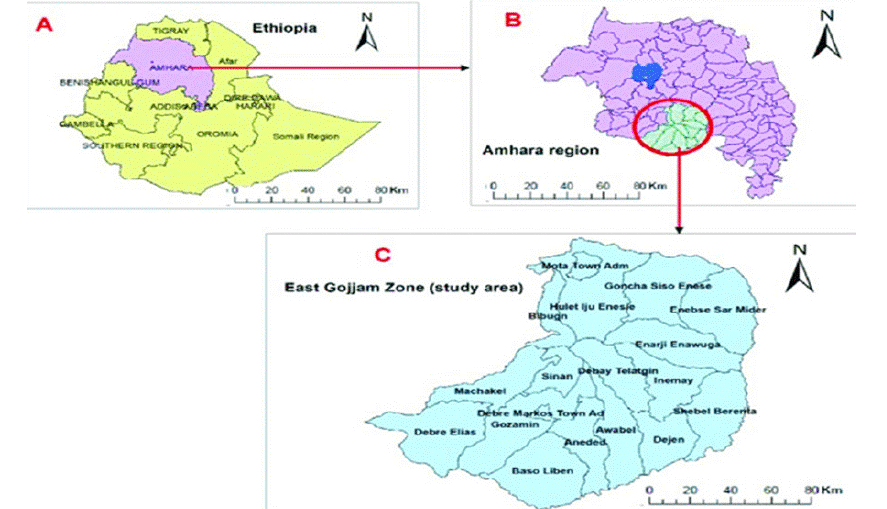
Figure 1: Map of study area.
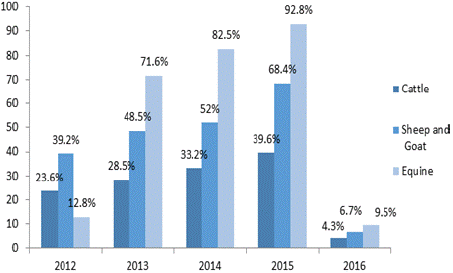
Figure 2: Year-wise anthrax vaccination coverage in the study area.
Source: East Gojjam Zonal Livestock Development Office (EGZODO) from
2020 to 2024.

Figure 3: Year-wise black leg vaccination coverage in the study area.
Source: [6].
Ovine Pasteurellosis: the vaccine comes from 2020 (9.2%) to 2024 (28.2%), but is bovine Pasteurellosis. In the year 2024 (10.2%), in 2020 no difference in percentage was recorded; it is the same because in war the problem is not being able to vaccinate (10.4%) (Figure 4).
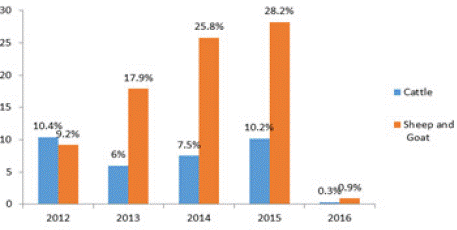
Figure 4: Year-wise pasteurellosis vaccination coverage in the study area.
Source: [6].
Sheep and goat pox along with anthrax vaccine were utilized for goats in the research region.
According to the recorded data, the sheep pox vaccines in 2010 were 52.4% in 2020 and 107.4% in 2023. The vaccine covers from year to year, was able to (Figure 5). Lumpy skin disease vaccination coverage was 30.6% in 2020 and 55.4% in 2023, which is likely to increase year by year. But in 2024, low performance registered as shown below (Figure 6). Poor performance of foot-and-mouth disease vaccines when registered in 2020 to 2023, vaccine coverage was 0.02% compared to 0.4% for other vaccines used (Figure 7).
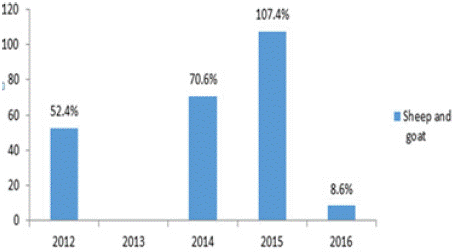
Figure 5: Year-wise sheep and goat pox virus vaccination coverage in the
study area.
Source: [6].
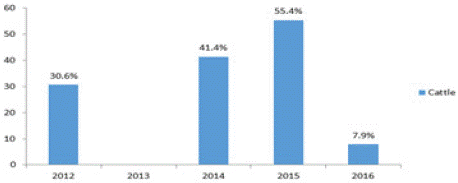
Figure 6: Year-wise lumpy skin disease vaccination coverage in the study
area.
Source: [6].
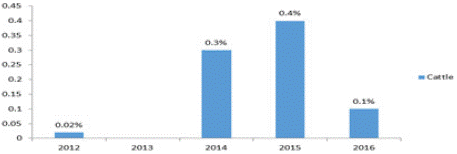
Figure 7: Year-wise foot and mouth disease vaccination coverage in the
study area.
Source: [6].
African horse sickness (AHS) vaccination coverage in 2010 was 111.3%, in 2020 it was 150%, and in 2023 it can be increased from year to year (Figure 8). Newcastle disease vaccination coverage increased from 78.6% in 2020 to 241.8% in 2023, which can be increased from year to year (Figure 9). Gumboro disease vaccine 4.9% in 2020 to 6.1% by 2023. However, it was in the study season year that the vaccination percentage for infectious disease (Gumboro disease) was determined. It did not increase (Figure 10).
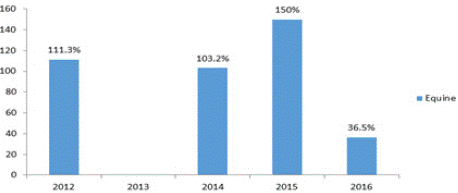
Figure 8: Year-wise Africa horse sickness vaccination coverage in the study
area.
Source: [6].
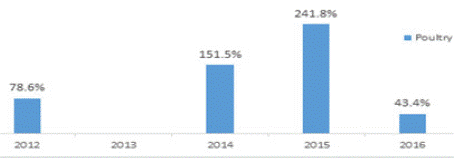
Figure 9: Year-wise Newcastle disease vaccination coverage in the study
area.
Source: [6].
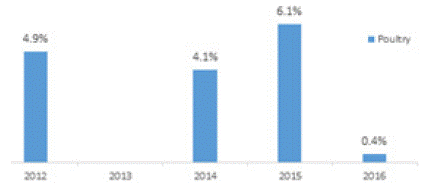
Figure 10: Year-wise infectious bursal disease (IBD) or gumboro vaccination
coverage in the study area.
Source: [6].
In the past five years, the animal’s vaccination against diseases campaign program brilliant performance of vaccine coverage, but in East Gojjam zone, located under districts one of the recurrences of the disease and the most important. The reason may be that infected animals with the same or different serotype from another area have come to another area because animals must move freely. Also, there may be a professional gap during vaccination. At 18 districts, the vaccination program was carried out for various diseases such as anthrax, blackleg, pasteurellosis, sheep and goat pox, skin disease, African horse disease, Newcastle, Gumboroand foot and mouth diseases. Numbers 2 to 10 are below.
Animals/species vaccinated: In 18 districts cattle, sheep and goats, donkeys, horses and chickens were vaccinated against bacterial diseases (anthrax, blackleg, pasteurellosis) and viral diseases (PPR, pox, ringworm, AHS, Newcastle).
Vaccination schedule: The age of primary vaccination in eighteen districts was 3 to 4 months. Various animals were vaccinated. Some districts systematically administer booster vaccinations; Vaccination program campaign there are different vaccination program dates between the districts or districts. Depending on the agro-ecosystem and vaccine stock (Table 1), high-level vaccination campaigns are conducted in the months of January, April, May and June and September, October and November. Highlands: September - November Midlands: December - February Lowland: March - August vaccinate a variety of animals.
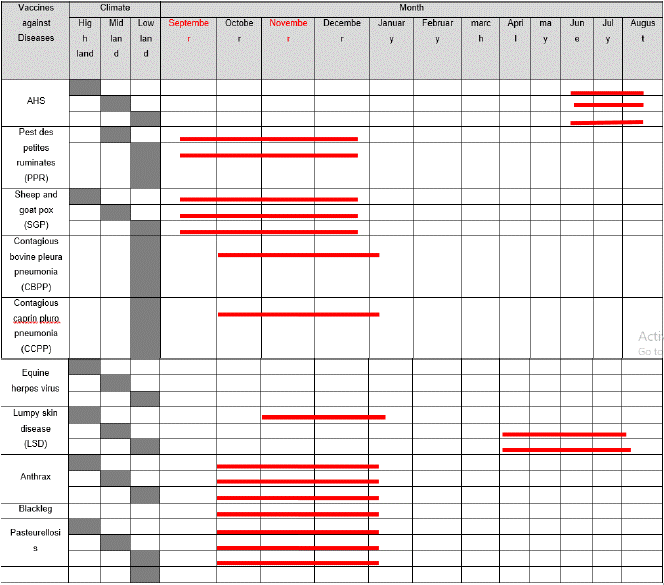
Table 1: Vaccination calendar. Source: [6].
Post Vaccination Monitoring (PVM): Post-vaccination surveillance (PVM) in two PPR-endemic districts based on their PPR vaccination programs by NADIC. The most common PVM activities implemented by NADIC were serological monitoring of blood samples to assess the immunity of animals and estimation of vaccination coverage, investigation of virus transmission among vaccinated sheep and goats and monitoring of outbreaks in vaccinated and unvaccinated areas.
Dorming Interventions
Systemic anthelminthic treatment: In the districts of the zone, deworming provides treatment of various animals for internal parasites such as roundworms (nematodes) and tapeworms (cestodes). Parasitism is considered to be one of the most economically important constraints in Ethiopia highland pastoralist communities. All districts have established a parasite control program and activities to interrupt the parasitlife cycle, systematic use of loose grazing management, dewormers and integrated systems have been implemented in each district with successful results.
Anthelmintic chemotherapy is widely used to control helminth infection in various districts in East Gojam zone both public and private sector deworming services are implemented in most districts. The animal husbandry community (the farmers) is practicing deworming on their herds without getting advice and prescriptions from trained veterinarians. The farmers surveyed use anthelmintic as a method of parasite control on the ease of administration and buy and use it from the private sector.
Strategic Deworming Deworming is done by identifying the best time for the worm. Only when dewormer effectiveness is necessary to prevent the development of deworming resistance and guarantee deworming of only selected animals. Strategic deworming is being done to reduce the number of treated animals and to reduce the number of worms exposed to drugs and to reduce resistance. The most commonly used internal parasitic drugs are the anthelmintics Albendazole, Tetramizole and Ivermectin.
Strategic Deworming Deworming is done by identifying the best time for the worm. Only when dewormer effectiveness is necessary to prevent the development of deworming resistance and guarantee deworming of only selected animals. Strategic deworming is being done to reduce the number of treated animals and to reduce the number of worms exposed to drugs and to reduce resistance. The most commonly used internal parasitic drugs are the anthelmintics Albendazole, Tetramizole and Ivermectin.
1. All grazing cattle are susceptible to intestinal worms and therefore may suffer significant production losses; Young cattle are susceptible to internal parasites until they develop immunity.
2. Larvae accumulate on pasture during grazing and infective levels are usually at their highest from mid-summer (March) when disease susceptibility is highest.
2. Larvae accumulate on pasture during grazing and infective levels are usually at their highest from mid-summer (March) when disease susceptibility is highest.
4. The complete life cycle of common gastric nematodes of cattle. Anthelmintic coverage should be given during the first two months of grazing and increasing the weight of cattle and the amount of medicine
5. Treat all cattle multiple times for many dangerous conditions of anthelmintic resistance
Drug Veterinary Revolving Fund/DVRF/
Cost recovery: Currently, the cost recovery of the district veterinary service, which has been started extensively in East Gojam Zone for more than a decade, is now prominent in the animal health programs in all districts.
There is a growing awareness that the producer is willing to pay for good service and that the district budget is under financial pressure and that additional revenue must be found. The willingness of livestock owners to pay has been seen across the district. Furthermore, after the introduction of the cost recovery payment system, the demand for veterinary services did not decrease in all districts. Veterinary services have improved significantly. Since the introduction of cost recovery system, it has made the society more benefited from its medical services.
According to the guidelines of the regional drug revolving fund, the cost of veterinary drugs will be added to the user community by adding 15 percent of the original purchase price. The service fee ranges from 0.5 Birr to 118 Birr. The types of services provided and associated costs are as per the state drug revolving fund guidelines (Table 2).
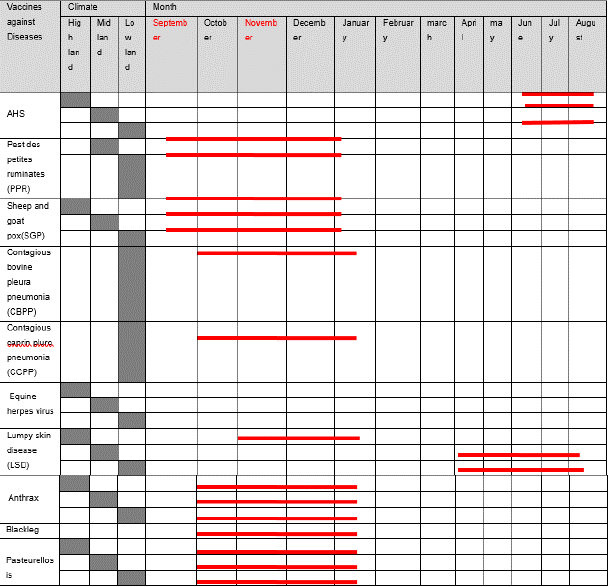
Table 2: Amount of money use of veterinary drug revolving fund up to 2023 in different districts.
Source: [6].
Revenue Management: Revolving fund 95% of the revenue from drug sales and service charges is used for the purchase of drugs and 5% is used for the purchase of veterinary equipment and chemical reagents.
Administrative aspects of cost recovery: The proceeds from many foreign donors are deposited into a special account called the Drug Veterinary Revolving Fund (DVRF) bank account number. In this way, veterinary services have been freed from the sometimesflawed central budgeting process and cumbersome financial control system. Hence, the cash flow is more stable and allows the veterinary services to remain financially stable in the long run.
Management control: Veterinary Drug Revolving Fund (DVRF) funds are managed through joint signature bank accounts. This has resulted in more stable cash flow and timely supply of drug.
Capacity Building Interventions
Capacity building interventions to address the problems of knowledge, attitude and practice of the farmers or animal owners in veterinary medicine are the main ones. According to the Ethiopian Agricultural Extension Package, capacity building of farmers and agricultural development extension workers is one of the main activities and is also provided as the main knowledge transfer through small group trainings. However, not all capacity building interventions are equally effective in all situations/contexts. The attitude of smallholder farmers towards modern health interventions has led to problems in animal health due to wrong attitudes in some cases such as miscarriage, reduced milk production, reduced feed consumption and weakness. Such situations occurred when technical health interventions were not combined with capacity building and awareness building interventions. Farmers provide awareness of widespread resistance to vaccination and health interventions and recommendations in a remote pastoral village through various media. Livestock owners differ in many characteristics, such as gender, experience in animal husbandry, age, education level; mix of breeds related to animal breeds, size of livestock holdings and the primary livelihood is mainly mixed cropping, Livestock breeding and pastoralist/agro-pastoralist. These factors determine livestock producers; knowledge of animal disease and provide lessons to consider in designing capacity building interventions.
Discussion
Main functions of animal health service
This survey shows that East Gojjam Zone Livestock is working to improve animal health through various intervention measures. Major actions include improvements in funding to sustain vaccination programs, deworming and veterinary services. These efforts aim to reduce the economic and health burden of widespread animal diseases in the region hybrid crop-livestock system. The present study confirms that different vaccines are being administered. Sheep, goats, cattle, equine and poultry were studied with different vaccination coverage results. Among the vaccines used in the districts, such as sheep and goat pox, black leg, lumpy skin diseases, anthrax, pasteurellosis, foot and mouth diseases, African horse sickness, new castle diseases, infectious bursal disease (IBD) or gumboro have been used to reduce frequent diseases in the environment. Current findings show that vaccination coverage was high in the East Gojjam zone. This finding is better compared to the low vaccination coverage of the Mulualem and Fikadu report of the permit compared to the population of the animals in the area [11]. This may be due to the intensive vaccination campaign and the veterinary services in the study areas. In the study area, the percentage of anthrax in cattle, sheep and goats increased from 23.6% to 39.6%, 39.2% to 68.4%, and 12.8% to 92.8% from 2020 to 2024. This study is similar to the Tadege and Afera reported trial and approval, which shows that black leg vaccination has increased from 8.8% to 14.7% year-on-year. In cattle, sheep and goats, the percentage of pasteurellosis decreased from 10.4% to 10.2%, and it increased from 9.2% to 28.2%. The percentage of Lumpy skin diseases and foot and mouth diseases in cattle has increased from 30.6% to 55.4% and from 0.02% to 0.04% and the percentage of sheep and goat pox virus has increased from 52.4% to 107.4% and the percentage of equine and sheep has increased from Africa Horse sickness, Newcastle diseases and infectious bursal disease or gumboro vaccination, foot and mouth diseases has been growing from 111.3% to 150%, 78.6% to 241.8% and 4.9% to 6.1%. In the current study, the coverage of all types of animal vaccinations has increased in comparison with the Mulualem and Fikadu, from year to year [11]. This shows that the black leg disease was the main soil-borne infection of the cattle population. In the current research department, avaccination program is planned and regularly given to prevent and control the diseases of animals. Because of this, the effectiveness of disease prevention and control is excellent. In addition to this, the supply of vaccine and logistics needed for the vaccination process is not enough in the area. Note that in 2025, the coverage is low only because of the war, but in other years, the vaccination coverage in all districts is high, more than 80%. However, for an effective disease prevention and control program in the area, for any disease, the entire population of animals must be vaccinated regularly before the disease occurs, as stated by Mulualem and Fikadu for successful vaccination [11]. Deworming combats parasites that have a significant impact on animal productivity. Commonly used anthelmintics use drugs such as Albendazole and Ivermectin.
Drug Veterinary Revolving Fund (DVRF)
According to this survey, each district has allocated one million initial DVRF budget and allocated 1000000 birr to Sede, Awabel, Ennarj, Hulet Eju, Enemay and Shebel to run DVRF. This will greatly reduce the budget burden on veterinary medicine. The Animal Drug Revolving Fund was noticed to be a different discovery from the work [14]. The DVRF system ensures sustainable veterinary care by recovering costs and investing in drug supplies and equipment. Revenue Management: Revenue from drug sales and service fees support animal service continuity and 95% is marked for the fund and 5% for the purchase of veterinary equipment. Challenges: Financial savings and management issues require strong monitoring to sustain the program effectiveness. Capacity building development and awareness education and capacity building through animal husbandry initiatives correct misconceptions about vaccines and drugs.
Conclusion and Recommendation
Conclusion
In 18 districts under East Gojam zone of ANRS, animal health service has shown encouraging progress in identifying animal health challenges and providing strong monitoring and support as well as solving the problem in time. It has made significant progress in disease prevention and control through strategic vaccinations, deworming measures and sustainable financing mechanisms such as the Revolving Veterinary Drug Fund (DVRF). These efforts have led to the improvement of animal production and productivity and the reduction of economic losses. However, challenges remain including disease outbreaks or spread due to unrestricted animal movement, lack of awareness among farmers, and logistical issues in vaccine distribution. Establishing anti-drug and modern health practices underscores the need for improved education and capacity building efforts.
Recommendations
To improve and make accessible veterinary services
In order to develop animal health services in the 18 districts under East Gojam zone inANRS to the same operational strategy in all districts, I have submitted their commendations listed below to the executive bodies at all levels, whether governmental or nongovernmental, from Kebele to Federal. Increase access to variety and quality of veterinary drugs and equipment. Establishing mobile veterinary clinics to serve remote or in accessible areas under government services. Strengthening disease outbreak surveillance and reporting systems. Promote vaccination programs through various media outlets. Ensure consistent and timely availability of vaccines and timely distribution. Use scientific and cost-effective vaccination strategies based on risk assessment. Monitoring the efficacy and coverage after vaccination. Strengthening the ability and awareness of the animal breeder every time. Addressing misconceptions about vaccines and medications. Develop sustainable financial support methods and provide political support for the sector. Develop and manage DVRF of drug supplies to be used only for intended purpose. Implement cost recovery models that balance affordability and sustainability for the service.
Encourage veterinary colleges, universities to carry out research and innovation
Collaborate with research institutions for evidence-based interventions.
Encouraging, supporting and monitoring privatization to improve the quality of veterinary medical services.
Collaborate with non-governmental organizations and private stakeholders to increase
access. Design region- or district-specific interventions taking into account agro-ecological diversity.
Implementation of these recommendations will promote sustainable development in the
livestock sector in all districts of East Gojam zone, improve production and productivity and increase food security.
Availability of Data and Materials
All the datasets generated or analyzed during this study are included in this manuscript.
Authors’ Contributions
I the authors contributed to data collection, study design, data interpretation, reference search, manuscript writing and editing and I have approved the submission myself final manuscript.
Acknowledgments
Before all, I praise the living God through Jesus Christ for his protection, divine miracles, and wonderful guidance throughout this study period.
I am greatly indebted to my friends, Mr. Getahun, for their technical guidance, insight, understanding of my condition, and time devotion to correct this paper.
I would like to acknowledge Mr. Getahun, Dr. Kifilu, and Dr. Mezgebu, Debark University and East Gojjam Zone Livestock Office animal health team members, for their valuable technical support and encouragement.
My deep appreciation goes to Mr. Getahun for his ignitable courage and financial support. I would like to acknowledge my friend Birtukan Ayele for the type of editing, the cost they paid, and the priceless scarification during the period of this study.
Thanks, are also due to all friends for their encouragement and true love. Finally, I would like to say thank you to all my relatives who have the dream of my success.
References
- Alemayehu A, Assemu T, Menale W, Tadele A, and Yazie C. Strategic Document for the Establishment of New Agricultural Research Center in East Gojjam Zone. Amhara Region Agricultural Research Institute (ARARI), Bahir Dar, Ethiopia. 2016.
- Amede T, Auricht C, Boffa M, Dixon J, Mallawaarachchi T, Rukuni M, Teklewold-Deneke T. A farming system framework for investment planning and priority setting in Ethiopia. ACIAR Technical Reports Series No. 90. Australian Centre for International Agricultural Research: Canberra. 2017; 52.
- Angesom H. Major constraints of the veterinary services delivery system and its solution in pastoral areas of Ethiopia. 2015.
- Bekele G, Lamaro M, Berhe G & Berhe A. Production potential and preservation methods of hide and skin in three selected districts of gambella region, south west Ethiopia. International journal of research Granthaalayah. 2017.
- BoFED (Bureau of Finance and Economic Development). Annual Statistical Bulletin for 2013/14 Budget Year. Bahir Dar. 2014.
- East Gojjam Zonal Livestock Development Office (EGZODO). Annual Statistical report for 2023/24 Budget Year. Debre Markos. 2024.
- Desta H. Common defects of sheep/goat skins in Ethiopia and their causes technical bulletin. Ehiopian Veterinary Journal. 2008; 14: 31–38.
- Garrity D, Dixon J, Boffa M. Understanding African farming systems: science and policy implications. Food Security in Africa:bridging research into practice Conference. AIFSC/ACIAR. Sydney, Australia. 2012.
- Gizaw S, Woldehanna M, Anteneh H, Ayledo G, Awol F, Gebreyohannes G, et al. Animal Health Service Delivery in Crop-Livestock and Pastoral Systems in Ethiopia. Front. Vet. Sci. 2021; 8: 601878.
- IGAD (Intergovernmental Authority on Development). Roles of public and private sectors in the supply and provision of animal health services in the IGAD region. 2017.
- Mulualem A, Fekadu S. Retrospective study on livestock vaccine coverage and trends in digelu-tijo district, arsi zone: Ethiopian Institute of Agricultural Resarch ,Kulumsa Agricultural Research Center , Kulumsa Ethiopia. 2020.
- OIE, Office International des Epizooties. The Roles of Veterinary Services in a Food Safety System. 2021; 1-4.
- Setotaw F, Getachew A, Aemiro K, Tesfahun A & Chilot Y. Farming systems characterization and analysis in East Gojjam Zone: Implications for research and development (R&D) interventions. Ethiopian Institute of Agricultural Research (EIAR). 2020; 127: 44.
- Solomon W, Wondwosen A and Tesfaye H. Assessment of the veterinary cost recovery scheme in the Amhara region, Ethiopia: AGP-Livestock Market Development Project, Addis Ababa, Ethiopia. 2018.
- Tadege A, Afera B. Assessment of Vaccination Coverage of Sheep and Goat using Retrospective Data in Woreda Raya Alamata. Momona Ethiopian Journal of Science. 2016; 8: 83.
- World Bank. Project appraisal document for the Livestock and Fisheries Sector Development Project, Ethiopia. 2017.